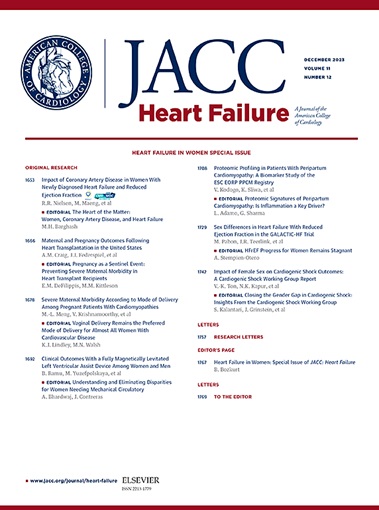2024 年心脏移植的供体选择。
IF 10.3
1区 医学
Q1 CARDIAC & CARDIOVASCULAR SYSTEMS
引用次数: 0
摘要
心脏移植(HT)候选者的数量仍然远远超过可用器官的数量,美国的供体心脏未使用率仍然明显高于欧洲等其他地区。尽管预测心脏移植的预后仍然具有挑战性,但我们对影响心脏移植后预后的因素的总体认识在不断加深。我们注意到,许多被认为是 "高风险 "的供体风险因素并不一定总是对 HT 术后结局产生不利影响,事实上,它们之间存在细微差别,并与其他供体和受体风险因素相互作用。随着运送过程中器官保存技术的不断发展、循环死亡后捐献实践的不断扩大以及器官分配政策的拟议变革,器官移植领域仍在继续发展。因此,该领域必须继续完善其在高温热疗中选择捐献者和预测风险的流程。本文章由计算机程序翻译,如有差异,请以英文原文为准。
Donor Selection for Heart Transplantation in 2025
The number of candidates on the waiting list for heart transplantation (HT) continues to far outweigh the number of available organs, and the donor heart nonuse rate in the United States remains significantly higher than that of other regions such as Europe. Although predicting outcomes in HT remains challenging, our overall understanding of the factors that play a role in post-HT outcomes continues to grow. We observe that many donor risk factors that are deemed “high-risk” do not necessarily always adversely affect post-HT outcomes, but are in fact nuanced and interact with other donor and recipient risk factors. The field of HT continues to evolve, with ongoing development of technologies for organ preservation during transport, expansion of the practice of donation after circulatory death, and proposed changes to organ allocation policy. As such, the field must continue to refine its processes for donor selection and risk prediction in HT.
求助全文
通过发布文献求助,成功后即可免费获取论文全文。
去求助
来源期刊

JACC. Heart failure
CARDIAC & CARDIOVASCULAR SYSTEMS-
CiteScore
21.20
自引率
2.30%
发文量
164
期刊介绍:
JACC: Heart Failure publishes crucial findings on the pathophysiology, diagnosis, treatment, and care of heart failure patients. The goal is to enhance understanding through timely scientific communication on disease, clinical trials, outcomes, and therapeutic advances. The Journal fosters interdisciplinary connections with neuroscience, pulmonary medicine, nephrology, electrophysiology, and surgery related to heart failure. It also covers articles on pharmacogenetics, biomarkers, and metabolomics.
 求助内容:
求助内容: 应助结果提醒方式:
应助结果提醒方式:


